There is one thing we know for absolute certainty should war come west of the International Date Line.
Aircraft from reconnaissance to strike will be thrown in the battle at D-0 at as high of a rate as maintenance and refueling will allow. It will continue at a pace, ignoring cute concepts as “crew rest,” until an operational pause is needed in order to allow fuel and parts to catch up or we run out of aircraft and pilots. While that is going on, American airman will be bailing out and ditching over the western Pacific due to everything from malfunctioning engines and avionics, combat damage, running out of fuel, or just plain getting lost. The ocean is vast, one-man life rafts are very small.
In WWII, the Korean War, and The Vietnam War, American and allied flyers could count on submarines and sea planes to pick them up, and after rotary wing assets picked up the mission as well. Off Korea and Vietnam, up to the coastline, the American Navy owned the water. We could get close to do Combat Search and Rescue, AKA CSAR.
We had a lot of assets, both multi-mission and dedicated platforms. Should war in the coming years appear west of the International Date Line, we will not have that luxury.
We have very few and very large submarines who have other missions of higher priority … even if they weren’t constrained by the very real limitations below the surface. Rotary wing assets on our surface ships are rather short ranged, slow, and few in number.
What are our options besides watching as our men and women die of dehydration, drowning, or are picked up by hostile power’s maritime militia?
The answer is simple and is in production by an ally who already buys a lot of military equipment from the USA.
There is no other comparable platform available in the free world that is a FOC, modern, and ready to go.
It is such a clear answer to a standing question that no one can provide an adequate answer why we shouldn’t - wearing USN or USCG livery - have at least four squadrons of these incredible platforms. If we bought Harriers and Canberras from the Brits, we can buy US-2 from the Japanese.
Just look at her.
…and yes, she’s runway capable.
She has a range of 2,500nm, can carry up to 20 people and only needs +/- about 1,000 feet to takeoff or land on water if needed. Better yet, she’s turnkey being operational for two decades.
The numbers speak for themselves.
So, back to the opening; we know the requirement is there, but we leave it unfilled. Why?
Simple; we are at peace and we do not have people who either understand - or worse don’t care - about what will happen at war against a peer.
This whole struggle - one that has been going on for a long time - is emblematic of a larger problem that our nation has with its acquisition system - bureaucratic, self-serving, and bloated - that acts not like it is there to serve the military, but the military is there to serve it and its holy processes. It is proud, selfish and insecure. It doubles down on prior bad decision, and responds with jealous rage should any good idea come from elsewhere.
I almost simply posted the below as the whole post this Monday … but I couldn’t help myself. More commentary is required.
We have some of our Representatives and Senators who “know what time it is” and are trying to have DOD give them something to work with. They will try to go around the accretion encumbered acquisition nomenklatura to the senior uniformed leadership for answers and something to use as leverage to move forward.
What does our uniformed leadership they do with this opportunity?
BEHOLD!
I will be the first person to admit that good, well-meaning, and informed people can disagree with seaplanes in general or the US-2 specifically, but they have to engage the conversation. Directly argue the requirement or offer realistic alternatives.
This does neither. If anything is demonstrates the narrowness of thought and fragility of substance used in opposition.
What a patronizingly toxic stew that answer is. I highly doubt Lung typed out that answer himself, so my commentary below is not directed at him personally, but … and it is what comes after the “but” that counts - but at the three-digit J or N code that extruded that from the random acquisitions professional statement subroutine from ChatGPT.
Let’s give that answer a full Fisking;
“The Indo-Pacific operational environment has evolved significantly since World War II”:
Let me check my WWII Pacific chart, my Vietnam War era globe, and GoogleEarth … and … no. The geography has not changed. The distances have not changed. The requirement of thousands of years to take and hold territory or eliminate your enemy from access to it has not changed. All the little islands, regardless of what Al Gore and John Kerry say, are still there. As we are seeing in the Russo-Ukrainian War, a million PPT slides saying so does not change the fundamentals of war.
Sentence one is invalid.
“The employment of seaplanes today would not meet the operational demands and current threat scenario.”
Is there an operational demand for us to rescue downed airmen and to be able to reach remote islands without airfields? Yes. Does your “current threat scenario” run from Northern Japan through to Darwin, Australia? Yes.
Sentence two is invalid.
“However, we support the continuous development of new and innovative solutions that may provide solutions to logistical challenges.”
So, you define “new” as something that only exists on PPT slides? By “continuous development” you mean never matures as a design that goes in to production. By “innovative” you mean high on technology risk. Undefined program risk. Unknown design risk. No known production line or remote estimate to IOC, much less FOC when we know that the next decade is the time of most danger of the next Great Pacific War.
Sentence three is irresponsible and professionally embarrassing given the history of transformational wunderwaffe this century.
“As an example, DARPA’s Liberty Lifter X-Plane seeks to leverage emerging technologies that may demonstrate seaborn strategic and tactical lift capabilities.”
Well, goodness, we will have to micro-Fisk this gaslighting horror show of a sentence. To start with, they are talking about either this from General Atomics;
….that could only be used on a very few select beaches under ideal weather in a completely permissive environment and could only be used for one specific mission and nowhere any possible hostile aircraft or ground forces. Also looks like we’d need a whole new engine and a small town’s worth or engine mechanics to maintain the maintenance schedule on those engines.
Then we have this offspring of an accidental mating of the Spruce Goose with the Caspian Sea Monster idea from Aurora Flight Sciences;
I give the odds of either one of those taking to the air prior to 2035, if ever, on par with a return of the submarine LST of Cold War fame (deck gun not included).
Let’s get back to the wording of that dog’s breakfast of a final sentence. Feel slimy reading it? You should;
“seeks to leverage“ - that is just a way of saying, “hope in magic beans.” Gobbledegook.
“emerging technologies“ - oh, you mean something that hasn’t left the computer, white board, or PPT slide.
“that may demonstrate“ - so, even if our magic beans managed to fuse unobtainium with Amrita, we’re not really sure if the strip mining of strange blue creature’s holy sites and drilling holes in the soft pallet of whale-like thing will result in something of use.
“strategic and tactical lift capabilities“ - I’m sorry, an eight or ten-engined aircraft that any goober with a 1960s-era iron-sighted RPG-7 could target at maximum range is not going do anything “tactical” - especially at the expected price of those things and the resulting precious few that wind up displacing water. Oh, and you admit that it will only be used for cargo, so it can’t do the full range of possible missions the US-2 can … just cargo. On just a few beaches that are fully surveyed ahead of time. At the right tide. In the right weather. In a 100% safe and permissive environment.
The final sentence is a caricature.
Rep. Austin Scott (R-GA) should feel at least mildly insulted by this reply. It was a serious question given a canned answer that, slightly modified, could have been provided at any time in the last quarter century by the lethargically complacent maintainers of the suboptimal habits of the mistakingly entitled acquisitions nomenklatura
.




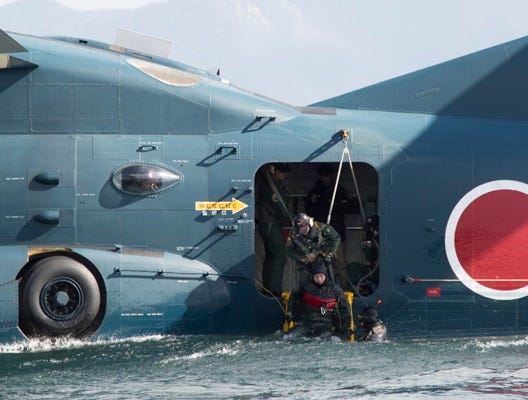
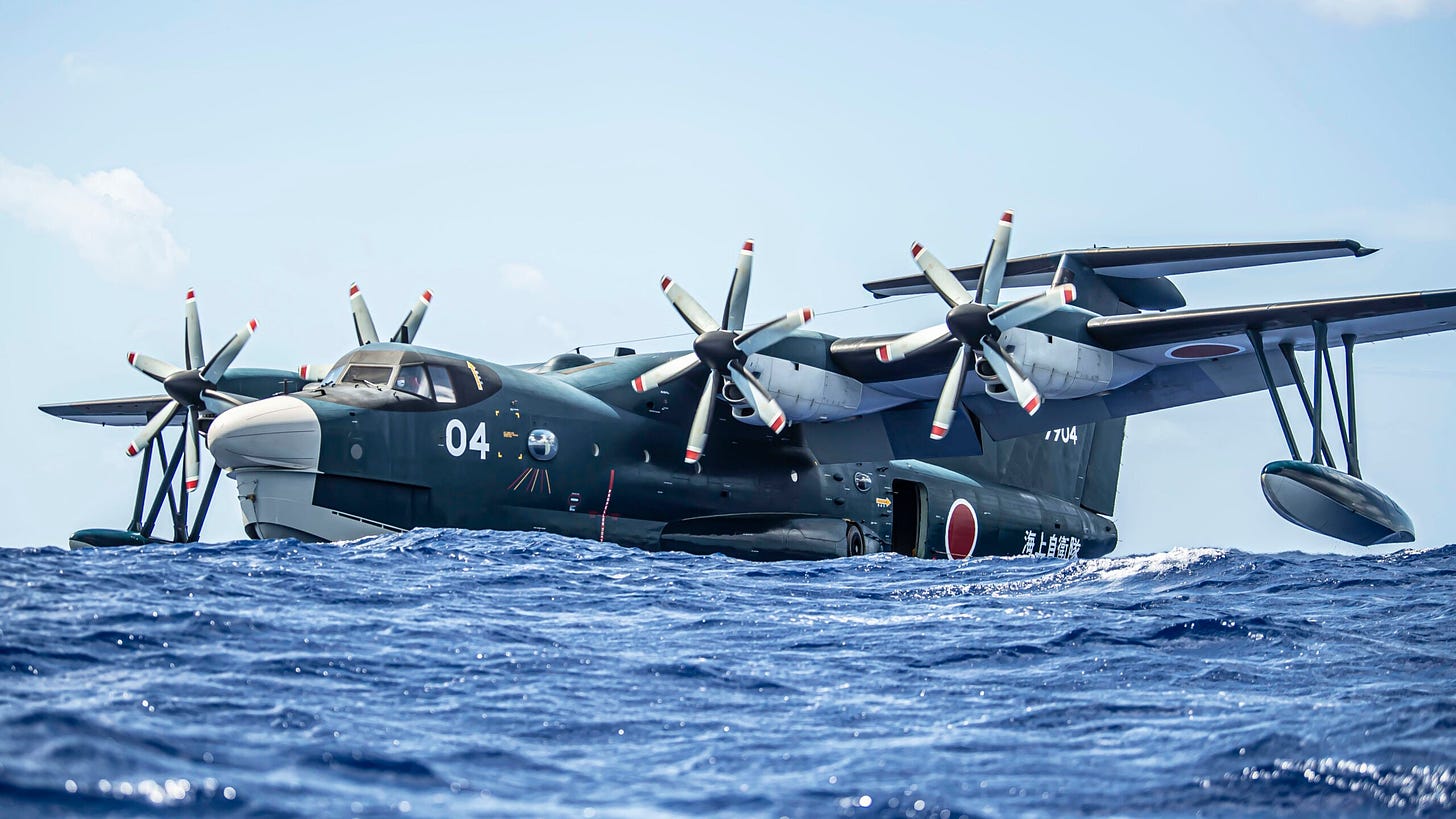
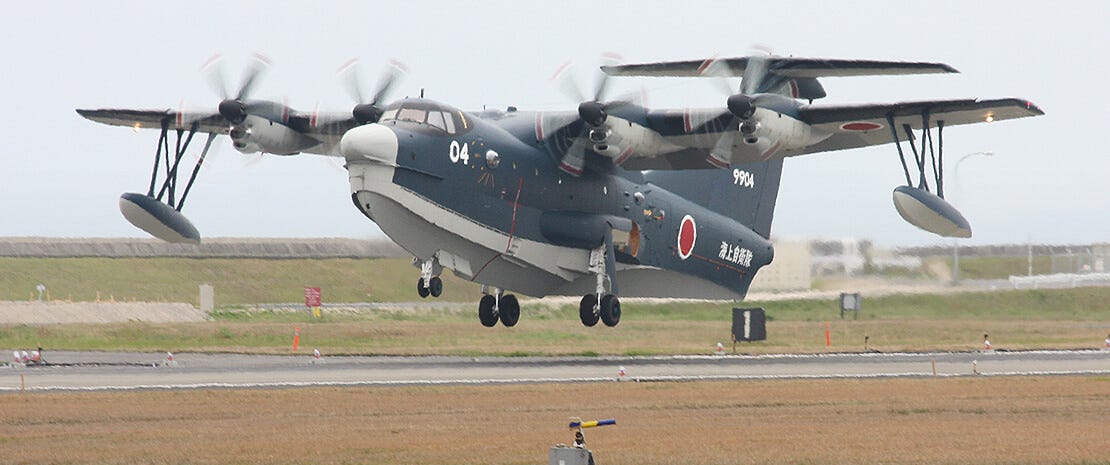
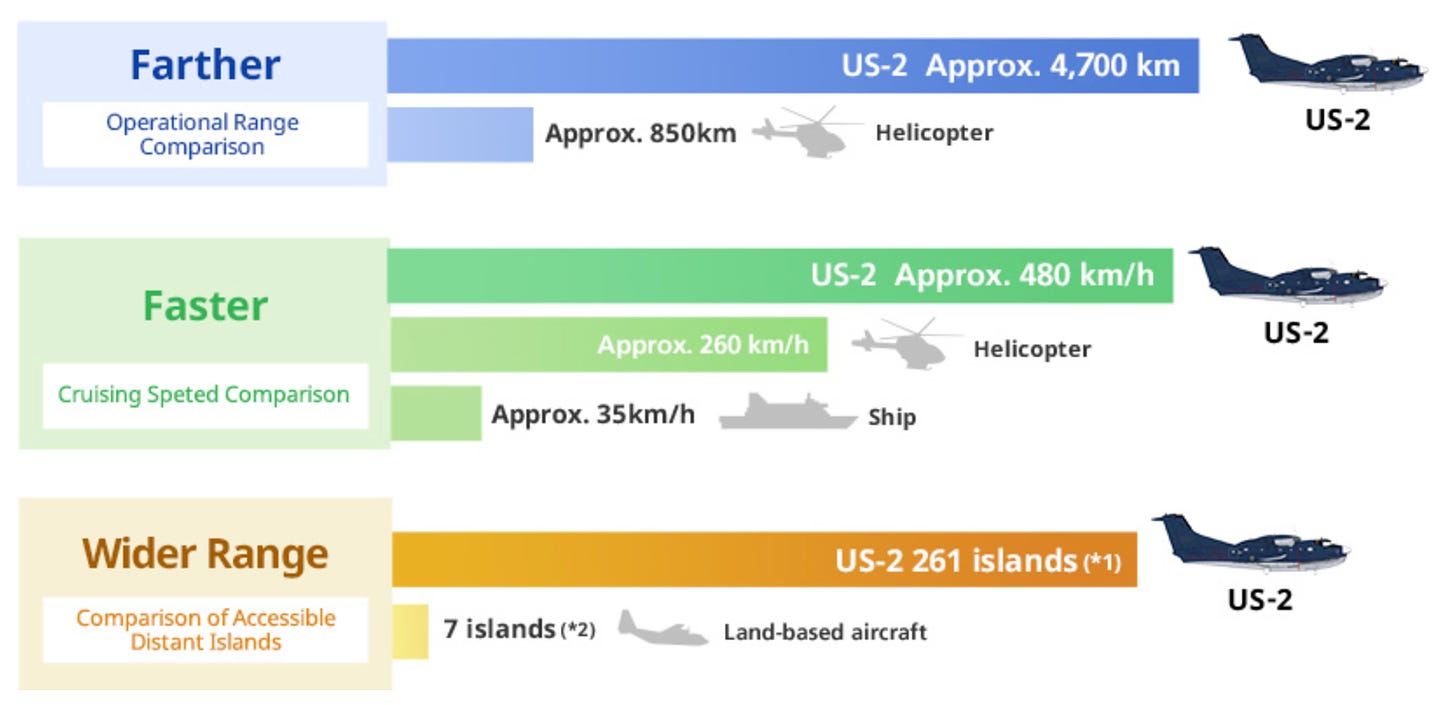



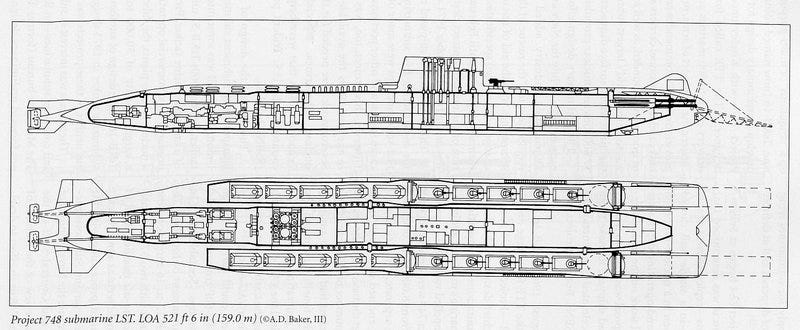
When I give a history tour with young flight students in Pensacola, I always show them the score board of the Hornet with all those Japanese air to air kills (over 600) I would point and tell them to imagine the opening days of the war with China and being on the 7th fleet watch floor and hearing and seeing all the PLB’s going off over the South China Sea and Sea of Japan. I pointedly ask them: “Since this WILL be you or squadron mates. HOW will we rescue you? Submarines will be too important and critically employed to risk for a rescue. The rotary assets will be busy engaged in ASW or the DDG won’t be in the area due to tasking, and the CV will be busy engaging in reducing the LLOA for its next strike or its survival. What is the plan?!?”
The look on their faces is profound and I can tell it’s a thought and discussion they haven’t had up until then.
Rotary rescues provide an advantage over latency. Because a helo can hover and recover. But the environment must be semi permissive and with in range of the rescue. This makes a sea plane the best choice based on range alone and chance of success and survival of the rescue asset.
Admiral Aquilino is missing an opportunity to save training dollars to replace our airman and more importantly he is missing an opportunity to maintain the fighting spirit of those squadrons when they are tasked to fly and fight knowing they or their squadron buddies have a legitimate chance of rescue. To pretend or ignore that rescues won’t be an outcome of our war with China is a moral hazard and criminal.
I would hate to be the TFCC or Battle Watch Captain when the opening blows begin knowing we can’t rescue those aircrews.
Funny – I literally had this same conversation over the weekend with a P-8 bubba who was supposed to fly the US-2 as a part of USNTPS – I got the same stock response that while the ShinMaywa was fine piece of kit it was too specialized for USN use. I then asked him what the P-8 Plan B would be if the runways at Kadena, Andersen, and other sites were full of craters – he didn’t have an answer. I politely suggested he go read up on PatWing 10’s 1941/1942 “deployment” from Cavite to Darwin – Sal is right; there are very few (if any) senior USN officers who have an appreciation of history and have drawn lessons for the dark first six months of World War Two.
Papa Scoobs still speaks of the days when he was a JO stationed at NASNI and the last of the P5Ms graced the ramps, heralding the end of 50 years of seaplanes being an integral part of Naval Aviation.
Oh, and I’ve spoken with other USN bros who have flown the US-2 – they love it! Guess we’ll just sit back and watch LockMart fart around with adding pontoons to their “Sea”-130 – any bets on how long that’ll take???